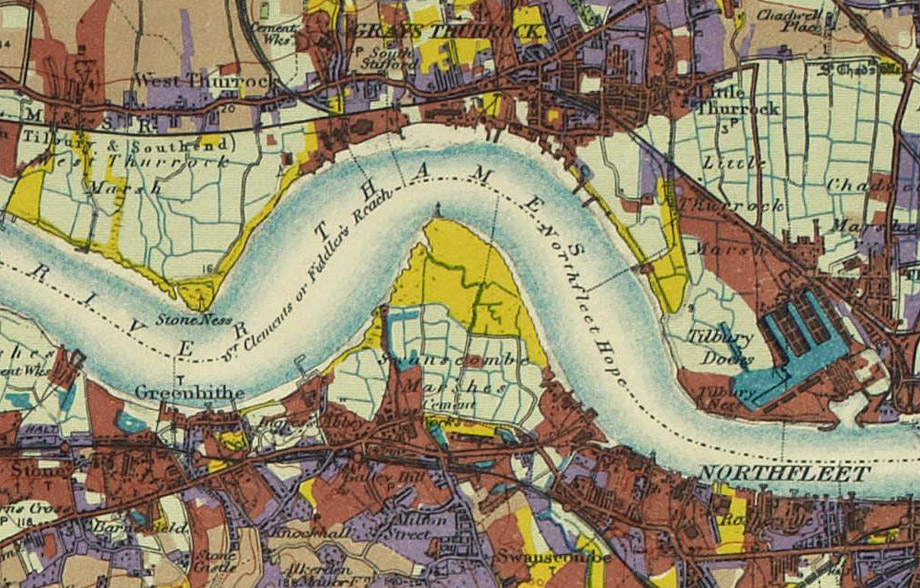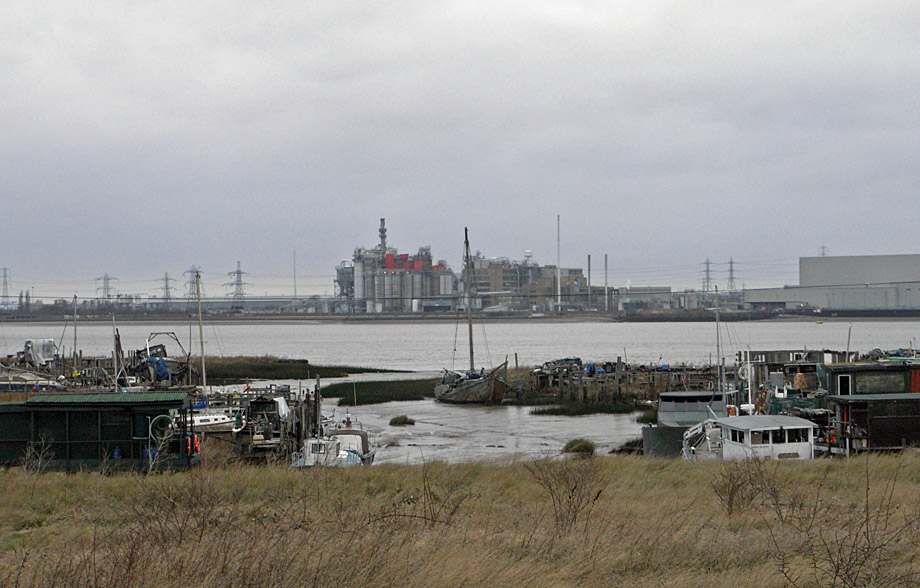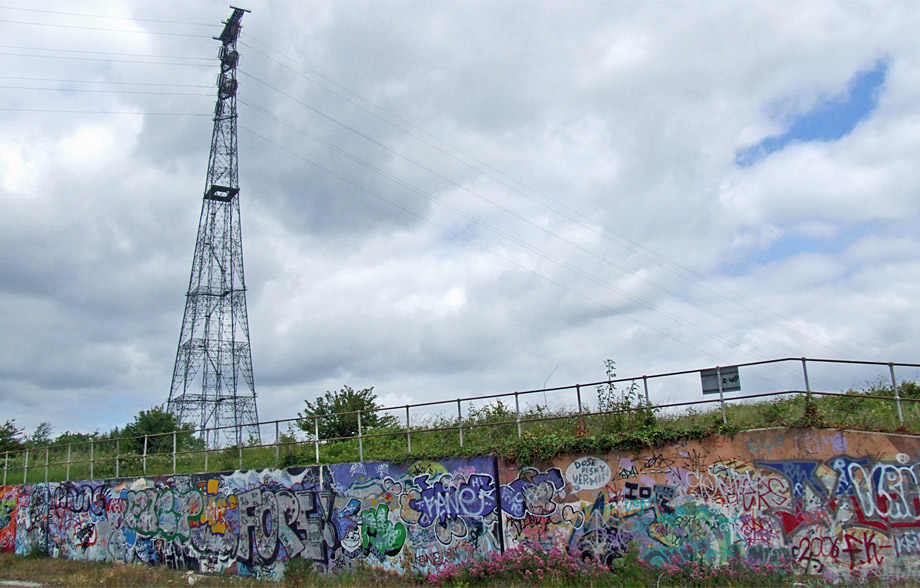Introduction • Chelsea Harbour • Mouth of the Westbourne • Custom House Stairs • Jane Parker, Wapping • Nicola White, Greenwich • The Albert Basin • Rainham, Essex • Aveley Marshes, Essex • Procter & Gamble, Thurrock • Peter Beckenham, Swanscombe • Tilbury Docks • Shornemead Fort, Kent • Coryton Refinery, Essex • Allhallows Marshes, Kent • Maplin Sands, Essex
THE SWANSCOMBE peninsula is on the Kent side of the Thames estuary between Greenhithe and Northfleet. Much of it is brackish marshland, the rest is a mix of rough pasture and ex-industrial land. A cement works occupies a portion of its eastern side. The peninsula has been among my favourite places to visit along the estuary for the past fifteen years.
Last year I came across the Save Swanscombe Marshes website put up by Peter Beckenham, a local naturalist. I got in touch with him and he kindly agreed to meet me at the peninsula, where the interview above took place. I wanted to know more about the marshes and peninsula itself, as well as the ambitious plans being put forward to construct the London Paramount theme park there.
Peter is opposed to the development and I should say here that I'm sympathetic to his position. I've no beef with theme parks but the peninsula is already an interesting place and it doesn't cost anything to get in. At least some local people use it for jogging, dog-walking, fishing and just general wandering about. The number of such apparently unregulated spaces in and near London is declining, yet they have the appearance of commons, in that whatever individual ownership exists is not visibly asserted. There is no signage, no information board, no heritage trail, and few fences.
Local opinion on London Paramount doubtless varies, and a case can be made for job creation. North Kent does have pockets of high unemployment, although these are mostly around the Medway. The consortium behind the plans claim that several thousand full-time jobs would result. The scale of the proposals is very large. The projection of 40,000 daily visitors would put it well ahead of Alton Towers and Thorpe Park, and it would completely change the character of that stretch of the Thames estuary. Whether you think that's a good or a bad thing is up to you. I am pleased to help present the view of one local man who knows the peninsula well.
The Swanscombe peninsula has been unusual in avoiding the industrialisation which transformed many of the surrounding areas. The Land Utilisation Map of the 1930s shows the large area of marshland (coloured yellow) occupying the northern half of the peninsula. Red-coloured industrial land is confined to some areas at its southern end. A small sewage works was constructed in the middle of the peninsula at a later date and then abandoned. The peninsula has changed over time, but it has not been transformed. Compare it to the West Thurrock Marshes on the left of the map – today they occupy perhaps a third of what they did then.

Unexpectedly, the peninsula is not entirely flat. Small hillocks and ridges, at least some manmade, are scattered across it, and a creek enters the peninsula from the western side. A small community of boatdwellers lives here, with the boats mostly pulled up onto the sides of the creek. It's similar to but more secluded than the cluster of houseboats along East Haven Creek on Canvey Island.

Much of the peninsula is verdant and so the photograph below with its colourful wall of grafitti isn't typical. But it does show a notable feature: the 623-foot tall pylon which helps carry the 400 kV Thames Crossing to its sister in West Thurrock. The pair are the two tallest in Britain.

London Paramount has faced delays in the development process and a planning application is now due to be submitted in the middle of 2016. A decision will be made by the Secretary of State towards the end of 2017. You can read London Paramount's side of the story on their website. Peter has set up an online petition to oppose the scheme.
Introduction • Chelsea Harbour • Mouth of the Westbourne • Custom House Stairs • Jane Parker, Wapping • Nicola White, Greenwich • The Albert Basin • Rainham, Essex • Aveley Marshes, Essex • Procter & Gamble, Thurrock • Peter Beckenham, Swanscombe • Tilbury Docks • Shornemead Fort, Kent • Coryton Refinery, Essex • Allhallows Marshes, Kent • Maplin Sands, Essex
